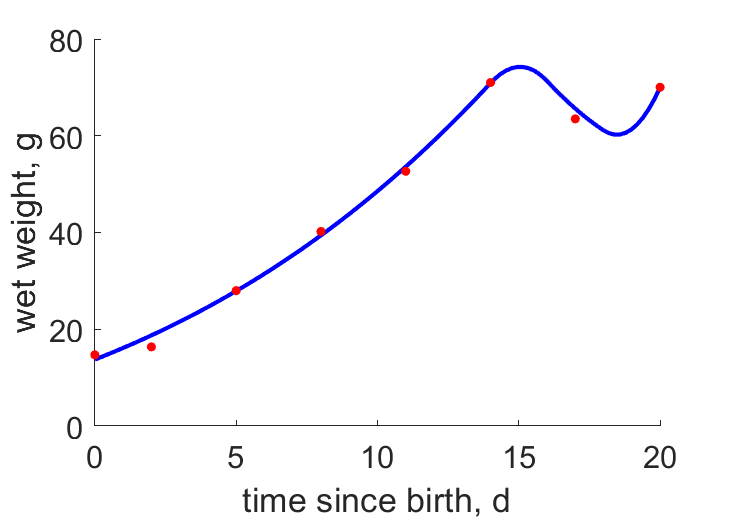Predictions & Data for this entry
| Model: std | climate: A, BWk, BSh, Cwa | migrate: | phylum: |
| COMPLETE = 2.5 | ecozone: TPi | food: biCvf, biCii | class: |
| MRE = 0.032 | habitat: 0iTf | gender: Dg | order: |
| SMSE = 0.002 | embryo: Tntf | reprod: O | family: |
Zero-variate data
| Data | Observed | Predicted | (RE) | Unit | Description | Reference |
|---|---|---|---|---|---|---|
| ab | 19.5 | 20.33 | (0.04264) | d | age at birth | guess |
| tx | 21 | 20.85 | (0.007266) | d | time since birth at fledging | NaheSark2020 |
| tp | 63 | 58.64 | (0.06928) | d | time since birth at puberty | guess |
| tR | 365 | 365 | ( 0) | d | time since birth at 1st brood | guess |
| am | 2008 | 2006 | (0.0009938) | d | life span | AnAge |
| Wwb | 14.7 | 13.71 | (0.06732) | g | wet weight at birth | NaheSark2020 |
| Wwi | 91.4 | 96.47 | (0.05549) | g | ultimate wet weight | avibase |
| Ri | 0.01781 | 0.01715 | (0.0372) | #/d | maximum reprod rate | guess |
Uni- and bivariate data
| Data | Figure | Independent variable | Dependent variable | (RE) | Reference |
|---|---|---|---|---|---|
| tW |  | time since birth | wet weight | (0.02095) | NaheSark2020 |
Pseudo-data at Tref = 20°C
| Data | Generalised animal | Halcyon smyrnensis | Unit | Description |
|---|---|---|---|---|
| v | 0.02 | 0.04735 | cm/d | energy conductance |
| p_M | 18 | 927.4 | J/d.cm^3 | vol-spec som maint |
| k_J | 0.002 | 0.03813 | 1/d | maturity maint rate coefficient |
| k | 0.3 | 0.3017 | - | maintenance ratio |
| kap | 0.8 | 0.8136 | - | allocation fraction to soma |
| kap_G | 0.8 | 0.7983 | - | growth efficiency |
| kap_R | 0.95 | 0.95 | - | reproduction efficiency |
Discussion
- Food availability varies in time
- Males are assumed not to differ from females
- mod_1: v is reduced
- mod_2: Pseudo-data point k is used, rather than k_J; Data set tp and parameter t_R are added, the latter replacing clutch interval t_N. Postnatal T is based on PrinPres1991, see get_T_Aves. See further the revision page, theme puberty
Bibliography